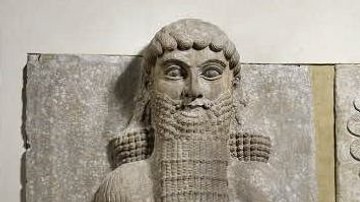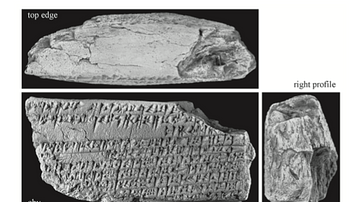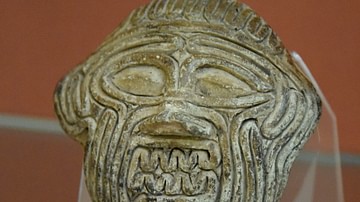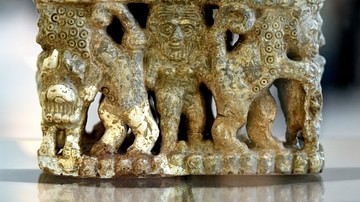Video
Gilgamesh was king of the Sumerian city of Uruk in Southern Mesopotamia, some 5000 years ago. According to legend, he was a ruthless despot, so the gods created a friend for him, a kind of wild man called Enkidu, who was able to challenge him successfully in battle. This took Gilgamesh's mind off oppressing his people, and he and Enkidu became inseparable friends. The two of them shared many remarkable adventures together but they made a fatal mistake. They traveled to the great cedar forest, where they killed a sacred beast known as "The Bull of Heaven". This angered the gods, so they sentenced Enkidu to death.
TABLET VIII of the Babylonian Epic of Gilgamesh, contains the text I sing in this lament. I would like to thank Andrew R. George, the translator of Gilgamesh, whose translation of the text appears in the subtitles to this video, for his generous help with the pronunciation of Old Babylonian. For those who are interested in learning more, I highly recommend Andrew George's YouTube videos on Mesopotamian mythology, as well as his excellent book, which is available on Amazon at the following link.
https://www.amazon.com/Epic-Gilgamesh-Penguin-Classics/dp/0140449191/
There are two musical instruments in this interpretation of the lament of Gilgamesh. The lute I decided to use is the Persian "setar", which is one of the closest instruments to the ancient three-stringed lutes that is still in existence today. The setar is capable of playing a wide range of quarter tones but, according to archaeomusicologists, the Babylonians did not use them. Personally, I’m not so sure about that.
The other musical instrument I used is a pair of reed pipes which are played together. The ones you see at the beginning of the video are copies of the pair of silver pipes that were discovered by archaeologist, Sir Leonard Woolley, during his excavations of the Sumerian city of Ur, in the 1920s. They have a sound similar to the modern “duduk” and, like the duduk, the shehnai and the Australian didgeridoo, they are played using the technique known as "circular breathing", in order to produce a continuous tone without interruption. The ancient Babylonian reed pipe was known as the "malilum".
Since I could not sing, accompany myself on the lute, and play the pipes at the same time, I sampled the sound of the pipes and used a MIDI pedal keyboard (like the ones organists use to play bass notes) to trigger the sounds - one foot for each of the two silver pipes. That way I could perform all the parts of the lament at once, without any need for overdubs.
The glazed brick wall you see behind me in this video is part of the magnificent "Gate of Ishtar", which was the main entrance to the ancient city of Babylon.
Any questions or remarks you may have regarding this video can be sent to me at the following address:
Enjoy!
[email protected]
Cite This Work
APA Style
Pringle, P. (2022, December 15). Gilgamesh Lament for Enkidu. World History Encyclopedia. Retrieved from https://www.worldhistory.org/video/2883/gilgamesh-lament-for-enkidu/
Chicago Style
Pringle, Peter. "Gilgamesh Lament for Enkidu." World History Encyclopedia. Last modified December 15, 2022. https://www.worldhistory.org/video/2883/gilgamesh-lament-for-enkidu/.
MLA Style
Pringle, Peter. "Gilgamesh Lament for Enkidu." World History Encyclopedia. World History Encyclopedia, 15 Dec 2022, https://www.worldhistory.org/video/2883/gilgamesh-lament-for-enkidu/. Web. 16 Apr 2025.




